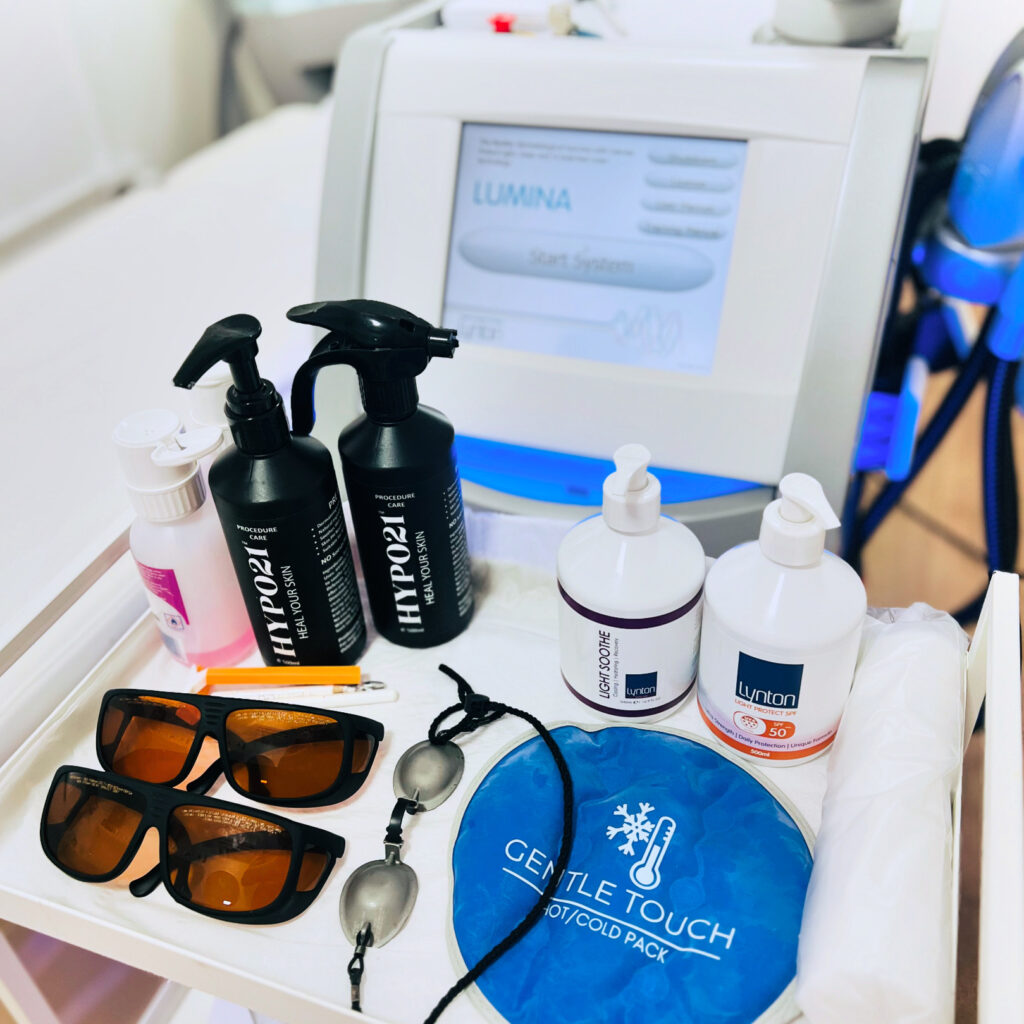
The world of aesthetic treatments can be overwhelming with its array of lasers and light-based devices. Each has specific capabilities suited to particular skin concerns or conditions. This post explains the differences between ablative and non-ablative lasers, fractional lasers, IPL, Q-Switch, Active Q-Switch, Pico lasers, and the types of lasers like Alexandrite and Ruby, along with their uses.
Ablative lasers remove the outer layer of skin (epidermis) and heat the underlying layer (dermis), stimulating collagen production. These are highly effective for resurfacing skin, treating deep wrinkles, scars, and uneven texture.
Examples: CO₂ Laser, Erbium YAG Laser.
Non-ablative lasers work beneath the skin’s surface without damaging the outer layer. These are less invasive, with minimal downtime, making them ideal for improving skin tone, texture, and mild wrinkles.
Examples: Nd:YAG Laser, Diode Laser.

Fractional lasers can be either ablative or non-ablative. They deliver laser energy in tiny dots (or fractions) to treat only a portion of the skin, leaving the surrounding tissue intact. This promotes faster healing and reduced downtime while addressing scars, pigmentation, and signs of ageing.
Examples: Fractional CO₂, Fraxel.
Though often grouped with lasers, IPL is technically not a laser. Instead, it uses broad-spectrum light to target specific chromophores in the skin, such as melanin (for pigmentation) or haemoglobin (for vascular lesions).
Common Uses: Treating pigmentation, redness (rosacea), broken capillaries, and unwanted hair.
Advantages: IPL is versatile and covers larger areas compared to focused laser beams.
Q-Switch Lasers
Q-Switch lasers emit high-energy pulses in extremely short durations (nanoseconds). This technology is ideal for targeting pigments without damaging surrounding tissue.
Common Uses: Tattoo removal, treating pigmentation issues, and melasma.
Active Q-Switch
Active Q-Switch lasers deliver energy even faster, making them more effective at shattering pigment particles in tattoos and pigmented lesions for quicker clearance.
Pico Lasers
Pico lasers work in picoseconds (one trillionth of a second), which is even faster than Q-Switch lasers. The ultrafast energy delivery breaks down pigments into finer particles, allowing for better clearance with minimal heat damage to the surrounding skin.
Common Uses: Tattoo removal, acne scars, skin rejuvenation, and pigmentation.
Advantages: Less downtime, reduced risk of side effects such as hyperpigmentation.
Effective for: Hair removal (especially lighter skin tones), pigmentation, and vascular lesions.
Known for: Fast treatment times and its ability to target melanin.
Effective for: Treating very fine or light-coloured hair, pigmentation, and tattoo removal (especially green and blue ink).
Known for: Being gentle on the skin.
Effective for: Deeper skin tones, vascular lesions, and tattoo removal (especially black ink).
Known for: Its ability to penetrate deeply, making it suitable for darker skin types.
Effective for: Hair removal, especially on medium to dark skin tones.
Known for: Combining efficiency with safety across various skin types.
Effective for: Deep resurfacing, treating severe scars, wrinkles, and skin laxity.
Known for: Powerful results but requires more downtime.
Effective for: Resurfacing and treating superficial wrinkles, pigmentation, and mild scars.
Known for: Less downtime than CO₂ but not as deep-reaching.

Selecting the right laser or IPL device depends on several factors, including:
Skin type and tone (Fitzpatrick scale).
The condition being treated (e.g., pigmentation, hair removal, acne scars).
Desired downtime and recovery period.
Understanding the different technologies used in aesthetics ensures you choose the right treatment for your needs. Always seek a qualified practitioner with experience in the specific device you’re considering, as proper expertise is crucial for safety and effective results.
If you have any questions about these technologies or which treatment is right for you, feel free to get in touch!









Sign up to my mailing list to ensure you receive all updates, my last minute booking availability, new products and treatments, offers and special discounts.